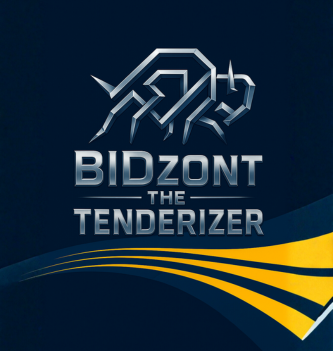

If you are a vendor who has bid on government contracts, you already know that RFP document packages are often extremely long. And 70 to 80 percent of that text is boilerplate — standard terms, conditions, legalities and recycled language from older RFIs or previous tenders.
For a small Northern tech team like ours, where efficiency matters, this creates a challenge. To find relevant opportunities, we used to scroll through pages of repeated text just to get to the part that actually matters: the scope of work, the tech stack, the certifications, the project size, the evaluation criteria, the budget, and whether the opportunity fits our capabilities.
That’s why we built BIDzont the TENDERizer — an internal AI automation tool designed to help us surface the information we need to make go/no-go decisions faster.
As a Yukon-headquartered custom technology company, we only see a limited number of tenders each year where our team’s expertise and available resources are the right fit. We realized we needed a better way to:
BIDzont uses our team’s authenticated access and only processes documents we are permitted to download.
Instead of combing through dozens or hundreds of pages manually, BIDzont surfaces the information that makes a go/no-go decision possible for our team in a single day.
With Nerd Mode fully activated, Marcos turned a frosty fall weekend in October into a Python building marathon, creating a script that streamlines how we review and organize procurement documents.
The script uses our authenticated access to:
We initially tested sending this text to ChatGPT, but the volume made that approach costly and unnecessary.
To improve speed, privacy and cost control, we moved the analysis step to an open-source model from Meta’s Llama platform. This enables us to:
This data is pushed into Notion, our internal PM tool, so our team can evaluate opportunities collaboratively.
We’re now building a hybrid approach that:
This lets us generate summaries and insights more efficiently while keeping our workflow fast and cost-effective.
Automated email alerts notify us when new opportunities are published in procurement portals, but they don’t analyze them. BIDzont bridges that gap by giving our team structured, daily clarity on whether an opportunity is worth further exploration.
With the administrative bottleneck removed, we can now review more opportunities across Canada. This also helps us stay aware of emerging trends in digital transformation at all levels of government.
Each morning, BIDzont outputs structured fit data into Notion. Current data points include:
All extracted information lives in Notion, giving our team a shared, structured environment for reviewing, discussing and deciding on opportunities.
We regularly support governments in modernizing their systems. BIDzont reflects our belief that we should also continually modernize our own internal workflows.
We are building toward a fully automated RFP intelligence workflow that will:
Eventually, BIDzont won’t just help us filter opportunities — it will help us prioritize where we can deliver the greatest impact.
BIDzont the Tenderizer began as a humorous internal experiment, but it is quickly becoming one of the most valuable AI automation tools in our workflow.
Tools like this point to a future where governments can also use AI to process tender responses more effectively, creating faster, clearer and more consistent evaluation processes while allowing teams to focus on quality and impact rather than volume.
If something in this post resonated—or sparked ideas—we’d love to hear from you.
If something in this post resonated—or sparked ideas—we’d love to hear from you.

Join our mailing list to receive fresh insights, stories and updates.